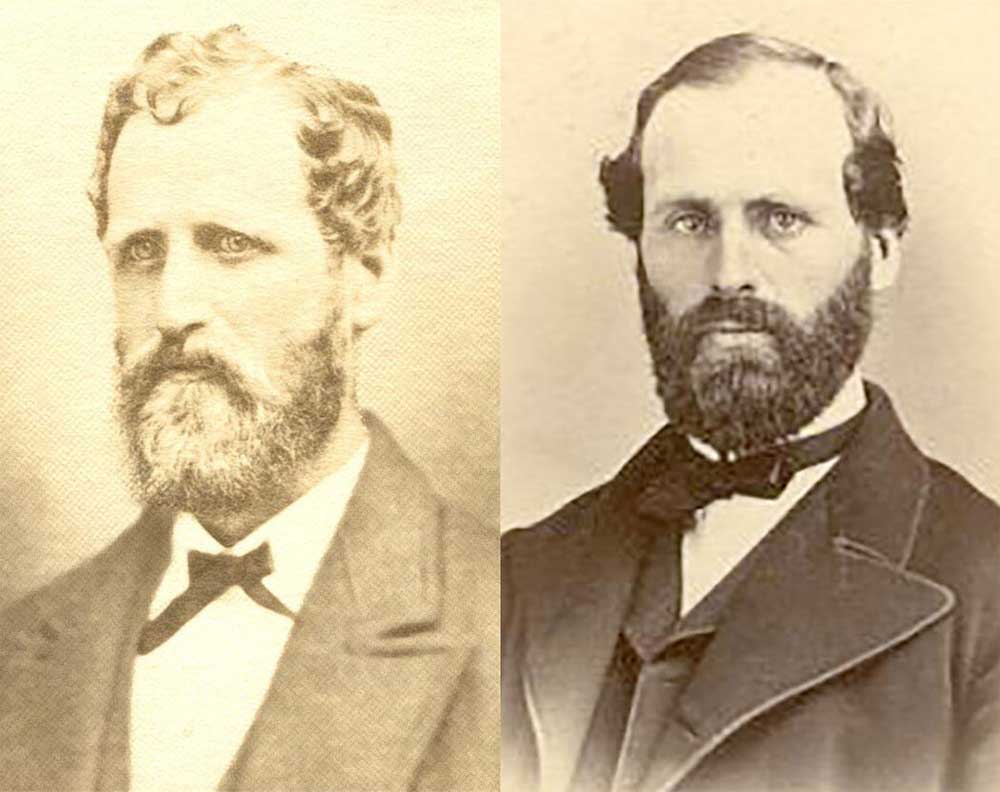Saints or Sinners? Characters of Pacific County: Oystervillian falls victim to villains
Published 1:08 pm Wednesday, January 31, 2024

- According to Crellin descendants, Caesar Crellin’s brothers John, right, and Tom never forgave themselves for hiring the J.M. Chapman sight-unseen and sending their younger brother off on a fatal sea voyage.
Caesar Crellin (1840- ?)
In the 1860 Census for Oysterville, Washington Territory, Cesson (perhaps a misspelling of Caesar) Crellin is listed as a 22-year-old oysterman, from the Isle of Man. He lived in House #95, perhaps a boarding house, and not with either of his brothers John, Jr. (31) or Thomas (27), or with father John, Sr. (60) and the rest of his large family. Caesar’s brothers are listed as “merchants” and his father, as a “farmer.”
What the Census does not indicate is that Caesar was known to be “deaf and dumb” — a condition that he had suffered from birth. Also, not indicated is that the family had been in the oyster business in Brack-a-broom on the Isle of Man for generations and that they had come as a family unit — father, mother and six children) — in 1853 to establish themselves in the Pacific Northwest.
They settled on John Jr.’s donation land claim which, years later, would become Nahcotta. Apparently, John, Sr. took up farming there and the three oldest sons (plus John, Jr.’s wife and three young children) headed for Oysterville. Caesar immediately went to work in the oysters while John and Tom began amassing oyster land and building their bivalve business as well as establishing stores which catered to the needs of the oystermen. They were serious entrepreneurs and their various businesses flourished.
At first the Crellins hired small ships out of San Francisco to bring goods north for stocking their stores and to take the peach baskets of live oysters south to San Francisco. When, in 1864, they finally bought a larger ship, the schooner J.M. Chapman, they decided to send Caesar south with its first load of oysters. At that time, the practice of the larger oyster companies was to buy holding grounds in San Francisco Bay where excess oysters from each shipment could be safely kept until sold to markets and restaurants. Caesar was to manage that end of the Crellin operation. According to all reports, he was intelligent, personable, and hampered only by his inability to hear or speak.
When the J.M. Chapman arrived in Shoalwater Bay, the Crellin brothers were pleased with their sight-unseen purchase. On board were the captain, four other crewmen and a cook — all experienced sailors and eager to load up with oysters and head south for a short turn-around in San Francisco. Caesar went along as a passenger, prepared to establish the California end of the Crellin Brothers’ trade. However, the ship never arrived in San Francisco. As time went by, it was assumed that it had gone down in a storm.
Not until 1912 — 48 years later! — did an old sailor turn up in Valparaiso, Chile, claiming that he had been the cook employed on the J.M. Chapman in San Francisco in 1864. Furthermore, he said that the ship was a privateer — a kind of pirate ship! He told how the schooner, instead of going from Oysterville back to San Francisco, had continued on south until it reached the Gulf of California, in Mexico. There the oyster cargo, by then spoiled, was jettisoned.
Young Crellin went ashore and did not return to the ship. As there was nothing more ever heard of him, it is supposed that while trying to get back to the United States overland, he may have taken the fever so prevalent in that land, and died. Also, there were hordes of brigands who would not hesitate to rob and murder. “He may have fallen into their hands, as they infested that whole country,” said the old cook.
The J.M. Chapman continued along the coast of South America, until, reaching Callao, Peru, the port of Lima. There took fresh provisions were taken aboard and arms enough to fit them out as a privateer. The crew later claimed they only wished to prey on the commerce of the U.S., thereby assisting the secession of the southern Confederate States.
The pirates raided coastal ships until a day in late 1866 when they came across a New York newspaper dated April 30, 1865, giving a full account of Lee’s surrender to Grant and describing the assassination of Abraham Lincoln. After reading the account, the captain called his men together, saying: “Our cause is lost! The South has been whipped by the North. Lee surrendered to Grant. Booth shot Lincoln. The jig is up with our business.”
It’s Tom Crellin’s Oysterville house that my family has lived in since 1902. I’ve met the Crellin descendants and we’ve talked about those days of sailing ships and slow communication. And we’ve said belated, silent prayers for Caesar. Whoever would have imagined that a young man from Oysterville would be a victim of piracy?









